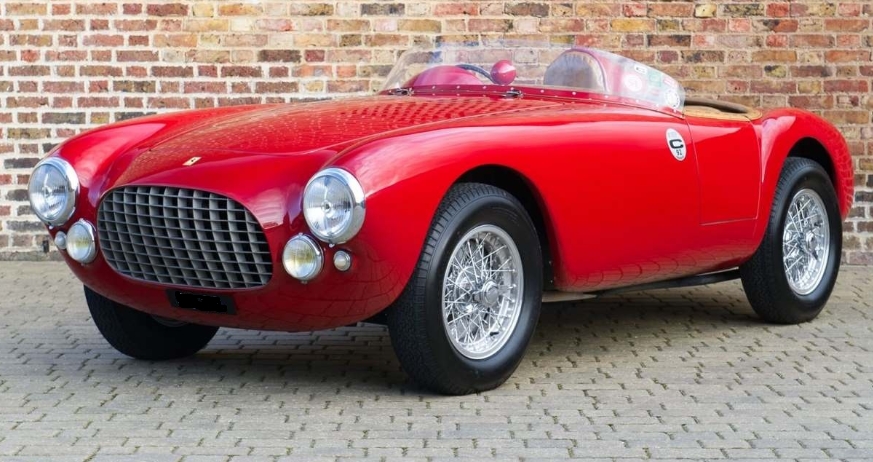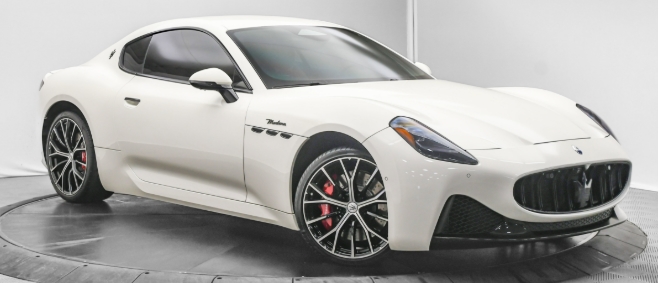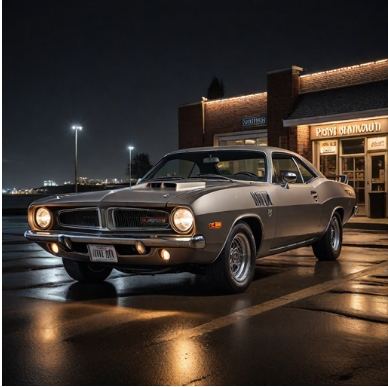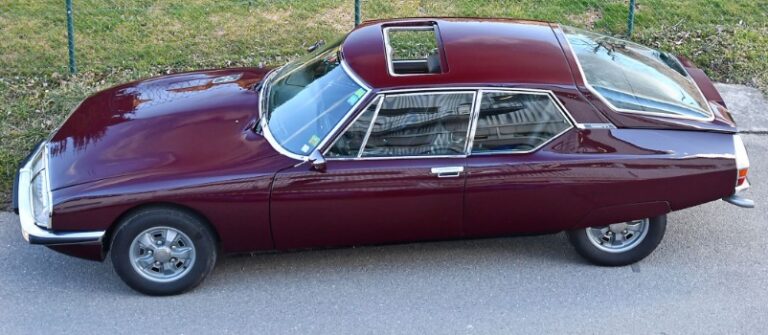The Evolution of Ferrari’s Classic V12 Series: 212 250 275 288
Ferrari’s history is replete with groundbreaking models, innovative engineering, and a relentless pursuit of automotive excellence. Among the most significant chapters in Ferrari’s racing and road car heritage are the series of V12-powered models that span from the early 1950s through the 1980s. This lineage includes the Ferrari 212, 250, 275, and 288 series—each representing technological advancements, racing successes, and the evolution of Ferrari’s design philosophy.
This article provides a comprehensive overview of these models, their years of production, key variants, and the impact they had on Ferrari’s legacy.
The Ferrari 212 Series (1951–1952)
Introduction and Background
The Ferrari 212 series marked Ferrari’s transition from its initial post-war models to more sophisticated racing and road cars. The 212 name denoted the 2.0-liter V12 engine, a significant step forward in Ferrari’s engineering.
Development and Design
Introduced in 1951, the Ferrari 212 was based on the Ferrari 195 but featured a larger engine displacement of approximately 2.6 liters. The engine was a 60-degree V12, designed by Gioachino Colombo, and was notable for its innovative design, which combined high performance with reliability.
Production Years and Models
- Ferrari 212 Inter (1951–1952): Primarily a grand tourer, the 212 Inter was designed for luxury as well as performance. It was characterized by a more refined and comfortable body, often coachbuilt by renowned Italian carrozzerias like Carrozzeria Touring and Vignale.
- Ferrari 212 Export (1951–1952): A racing version tailored for international competition, especially in the 24 Hours of Le Mans and other endurance races.
Key Features
- Engine: 2.6L V12 producing around 150–165 horsepower.
- Body Styles: Coupés, spider (convertible), and Berlinetta.
- Notable Models: The 212 Export was highly successful in racing, including victories like the 1951 Mille Miglia.
The Ferrari 250 Series (1953–1964)
Introduction and Significance
The Ferrari 250 series is arguably the most iconic in Ferrari’s history, spanning over a decade and encompassing a wide range of models that set standards for performance and design.
Origins and Development
The ‘250’ name refers to the engine’s approximate 250 cc per cylinder capacity, with the typical 3.0-liter V12 engine. The series began with the Ferrari 250 Europa (1952), but it was the 250 series introduced in 1953 that truly established Ferrari’s dominance.
Early 250 Models (1953–1959)
- Ferrari 250 Europa (1952–1953): An early prototype for the 250 series with a 2.4L V12.
- Ferrari 250 GT (1954–1960): The first production 250 GT, with various submodels.
Key 250 GT Variants:
- 250 GT Berlinetta “Tour de France” (1956–1959)
- Design: Pininfarina coachwork, lightweight, racing-oriented.
- Features: 3.0L V12, around 240 horsepower.
- Significance: Successful in racing, especially in endurance events.
- Ferrari 250 GT Boano (1956–1957)
- Coachbuilder: Carrozzeria Boano.
- Features: More refined, aimed at luxury buyers.
- Ferrari 250 GT Ellena (1957)
- Coachbuilder: Carrozzeria Ellena.
- Characteristics: Elegant design, limited production.
- Ferrari 250 GT Cabriolet Series I & II (1957–1960)
- Features: Open-top, luxurious appointments.
The 250 GTO Era (1962–1964)
The Birth of the 250 GTO
The Ferrari 250 GTO (Gran Turismo Omologato) debuted in 1962 and became a legendary model, combining racing prowess with road-going refinement.
Features and Variants
- Engine: 3.0L V12, producing approximately 300 horsepower.
- Body: Designed by Sergio Scaglietti with Pininfarina influences, featuring aerodynamic improvements.
- Production Numbers: Only 39 units produced, making it highly collectible.
Trim Levels
- Mainly a single, distinctive model with minor variations over its production run.
- Offered with both coupé and later, with some open versions.
Racing Success
The 250 GTO dominated GT racing in the early 1960s, including victories in the World Championship for GT Manufacturers.
The Ferrari 275 Series (1964–1968)
Transition and Technological Advancements
Building on the success of the 250 GTO, Ferrari introduced the 275 series to incorporate modern engineering features and increased performance.
Key Models and Variants
- Ferrari 275 GT (1964–1966)
- Engine: 3.3L V12 (later 3.3L and 3.4L variants), producing up to 300 horsepower.
- Design: Pininfarina styling, more streamlined and aerodynamic.
- Ferrari 275 GTS (1964–1968)
- Open-top version of the GT, with similar mechanicals.
- Ferrari 275 GTB (1964–1968)
- Features: The ‘Berlinetta’ coupe with a more aerodynamic body and improved chassis.
- Engine: Initially 3.3L V12; later variants included more power.
- Ferrari 275 GTS/4 NART Spyder (1967–1968)
- Limited Edition: Special open-top models for racing, built by NART (North American Racing Team).
- Significance: Raced successfully, often with bespoke coachwork.
Technical Innovations
- Introduction of independent rear suspension.
- Increased engine displacement and power output.
- Notable for its balanced chassis and racing success.
The Ferrari 288 Series (1984–1987)
The Evolution of the 275/308 Heritage
The 288 series marked a new era in Ferrari’s mid-engined supercars, succeeding models like the 308 and 328, and representing a significant technological leap.
Introduction of the Ferrari 288 GTO
- Debut: 1984 as a homologation special for Group B racing.
- Production: Limited to 272 units.
- Engine: 2.9L twin-turbo V8, delivering approximately 400 horsepower.
- Design: Aggressive, aerodynamic bodywork, with wide fenders and prominent spoilers.
Models and Variants
- Ferrari 288 GTO (1984–1987)
- Purpose: Built primarily for homologation purposes, but also a high-performance supercar.
- Features: Twin-turbocharged V8, all-wheel drive, sophisticated aerodynamics.
- Ferrari 288 GTO Evoluzione (Prototype)
- Concept: An evolution of the GTO, featuring further aerodynamic improvements and more advanced technology, though never officially produced.
- Ferrari 288 GTO ‘Ferroviario’ (Special Edition)
- Limited Variant: Rare and bespoke, with unique features.
Legacy
The 288 GTO is considered the predecessor to the Ferrari F40 and is regarded as one of the first supercars to combine turbocharging, advanced aerodynamics, and limited production for exclusivity.
.
THIS might be a great place to get your new car from!
Or for those who are into the “car flipping” business, here’s an excellent resource for you!

.
Summary and Impact
The Ferrari models from the 212 through the 288 demonstrate a remarkable evolution in automotive engineering, design, and racing dominance. Each series built upon the successes and lessons of its predecessors, pushing the boundaries of performance and luxury.
- From the 212: Introduction of the V12 engine, setting the stage for Ferrari’s racing and road car legacy.
- Through the 250: The most iconic and collectible series, with models like the GTO and SWB (Short Wheel Base) that defined the GT and racing worlds.
- With the 275: Modernized chassis, increased power, and further racing success, bridging the gap between classic and modern Ferrari.
- The 288: Turbocharged, technologically advanced supercars that signaled Ferrari’s shift into the era of high-tech supercars and homologation specials.
This evolution reflects Ferrari’s commitment to innovation, performance, and exclusivity. Each model remains a testament to the brand’s racing pedigree and its influence on automotive design worldwide.







